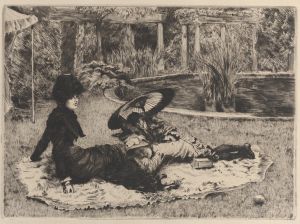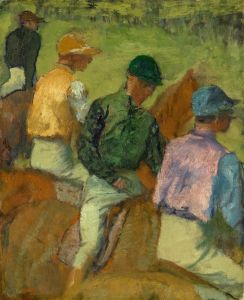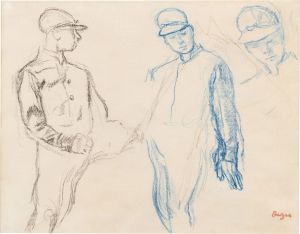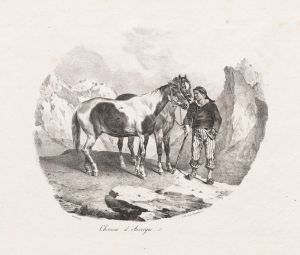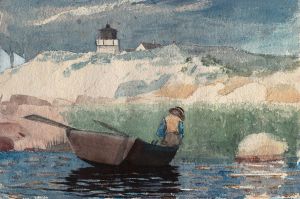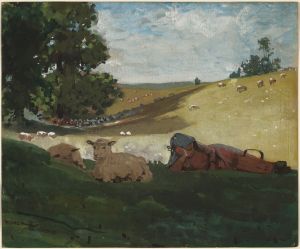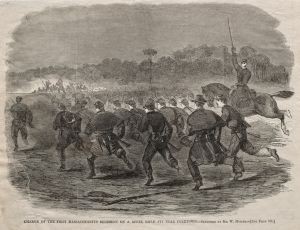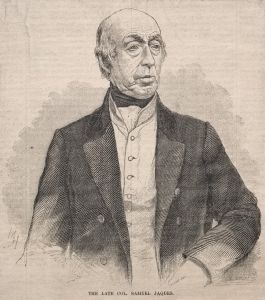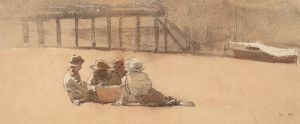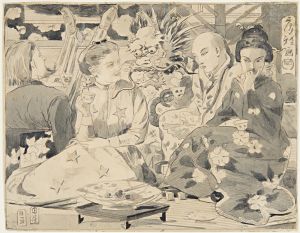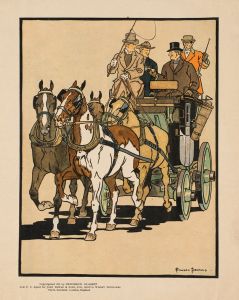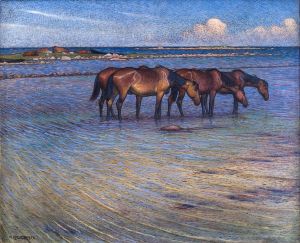
Horses and Wagon
A hand-painted replica of Winslow Homer’s masterpiece Horses and Wagon, meticulously crafted by professional artists to capture the true essence of the original. Each piece is created with museum-quality canvas and rare mineral pigments, carefully painted by experienced artists with delicate brushstrokes and rich, layered colors to perfectly recreate the texture of the original artwork. Unlike machine-printed reproductions, this hand-painted version brings the painting to life, infused with the artist’s emotions and skill in every stroke. Whether for personal collection or home decoration, it instantly elevates the artistic atmosphere of any space.
Winslow Homer, an American landscape painter and printmaker, is renowned for his marine subjects and depictions of American life. One of his works, "Horses and Wagon," reflects his keen observation and ability to capture the essence of everyday scenes. However, specific information about this particular painting is limited, and it is not among his most widely recognized works like "The Gulf Stream" or "Snap the Whip."
Homer was born on February 24, 1836, in Boston, Massachusetts, and began his career as a commercial illustrator. He gained recognition during the Civil War, where he worked as an artist-correspondent for Harper's Weekly, creating illustrations that depicted the war's impact on soldiers and civilians. After the war, Homer turned to painting, focusing on rural and coastal scenes that highlighted the simplicity and beauty of American life.
Throughout his career, Homer was known for his ability to portray the relationship between humans and nature. His works often depicted the ruggedness of the American landscape and the people who inhabited it. He had a particular affinity for the sea, and many of his most famous paintings feature maritime themes.
"Horses and Wagon" likely fits into Homer's broader body of work that captures scenes of rural life. His paintings often included elements such as farm animals, agricultural activities, and the natural environment, reflecting the 19th-century American experience. Homer had a unique ability to infuse his paintings with a sense of realism and vitality, making everyday scenes resonate with viewers.
Homer's technique evolved over the years, moving from the detailed realism of his early illustrations to a more fluid and expressive style in his later paintings. He was a master of both oil and watercolor, and his use of color and light was instrumental in conveying mood and atmosphere in his works.
While specific details about "Horses and Wagon" are scarce, it can be assumed that the painting embodies Homer's characteristic style and thematic interests. His works often evoke a sense of nostalgia and appreciation for the simplicity of rural life, capturing moments that might otherwise go unnoticed.
Winslow Homer passed away on September 29, 1910, in Prouts Neck, Maine, leaving behind a legacy as one of America's greatest painters. His works continue to be celebrated for their technical skill and their ability to capture the spirit of American life during a time of significant change and development.
In summary, while detailed information about "Horses and Wagon" is not readily available, it is likely representative of Winslow Homer's broader oeuvre, which is characterized by its focus on the American landscape and the lives of its people. His paintings remain a testament to his skill as an artist and his deep connection to the world around him.






